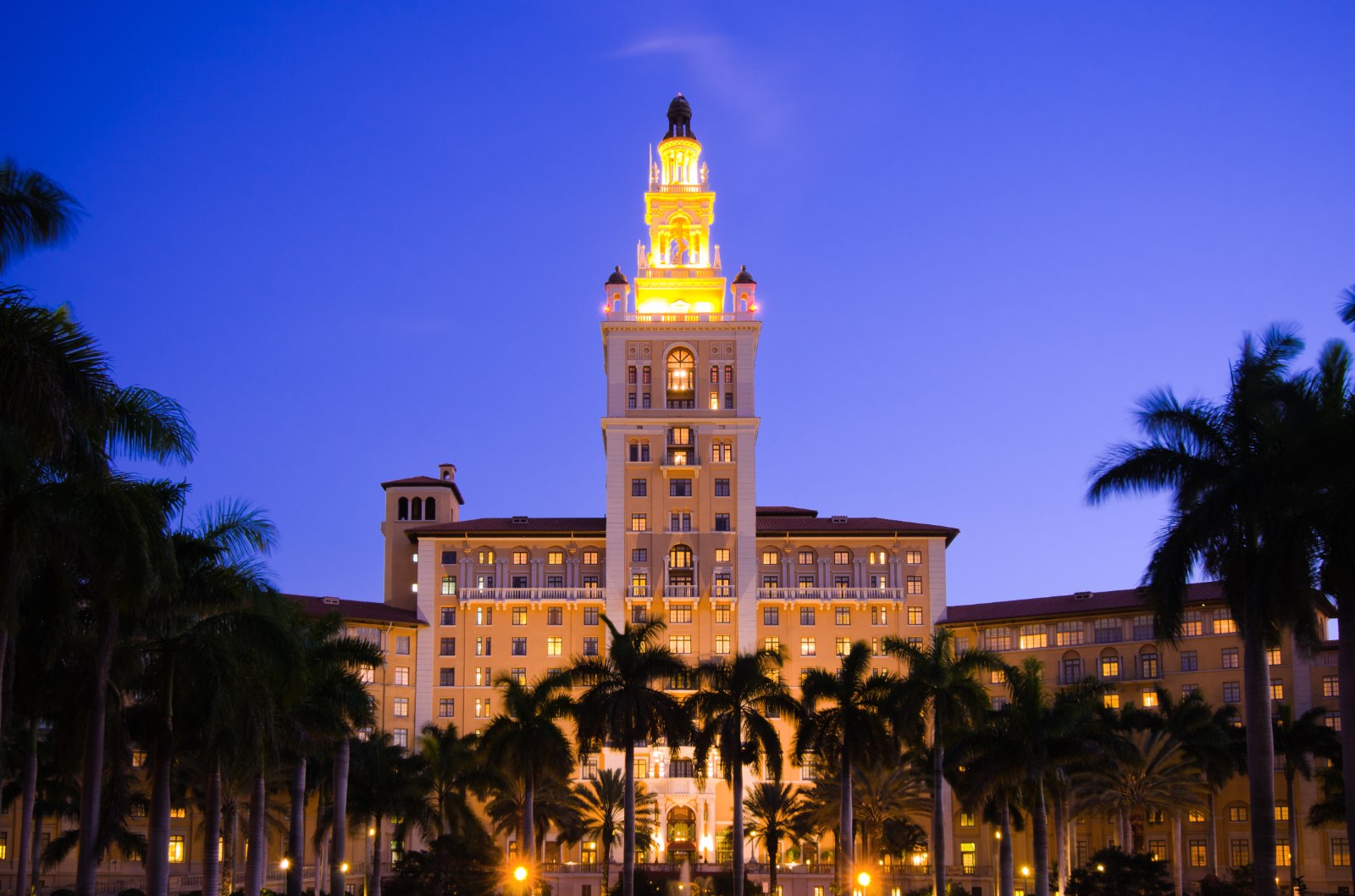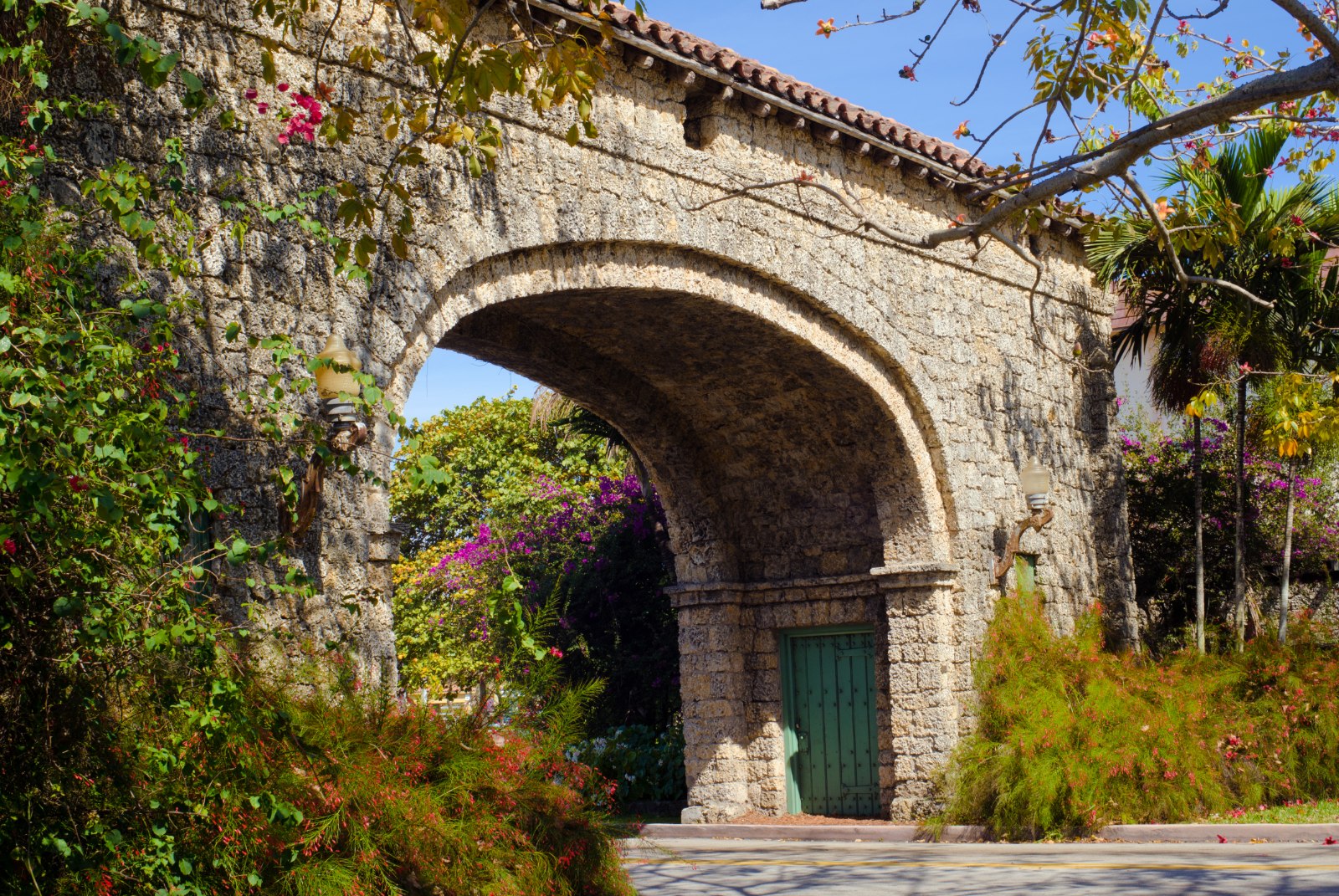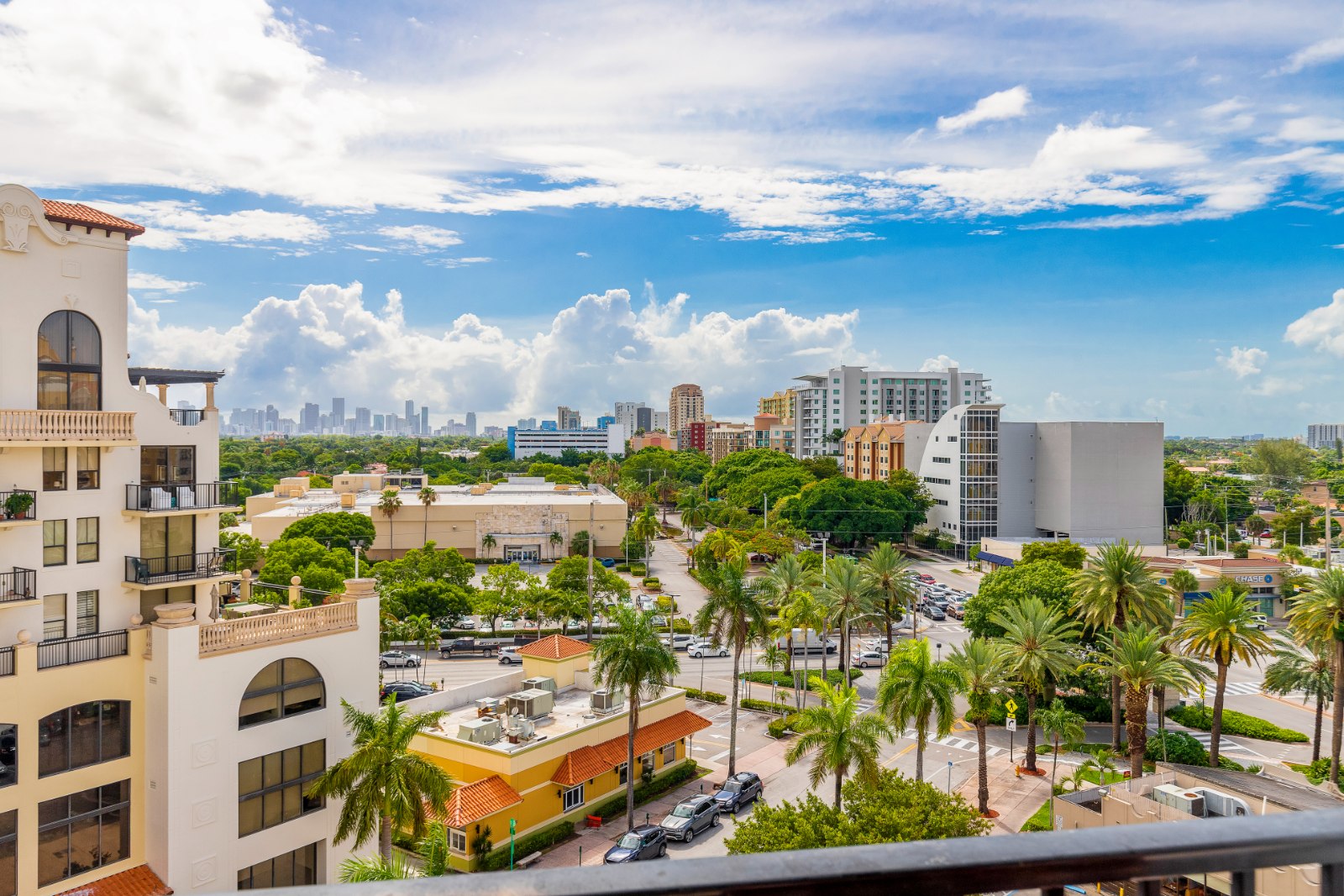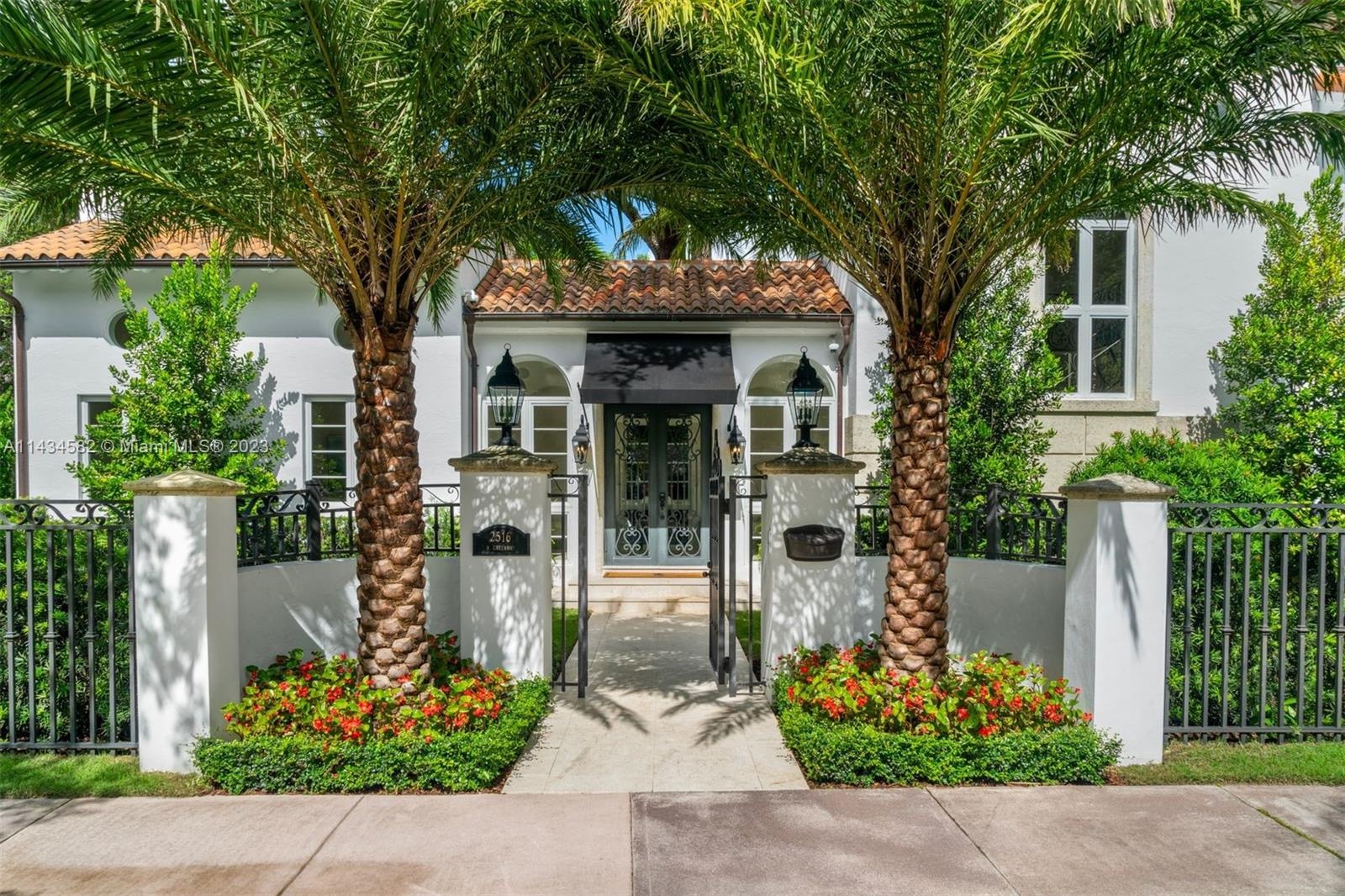Main Content
The timeless foundation of Coral Gables’ history, culture, and art

Coral Gables lives at the intersection of art, history, and everyday life. Its Mediterranean Revival architecture, shaded streets, and cultural landmarks all stem from a single vision: to create a city where beauty, order, and community work together. That purpose still defines it today, with the same design principles that shaped its grand entrances and plazas continuing in its theaters, gardens, and public spaces.
Table of Contents:
WHERE CORAL GABLES’ STORY BEGINS
Before Coral Gables became one of Miami’s most admired addresses, it began as the vision of George Merrick. Much of Coral Gables’ history traces back to his plan to create a city where architecture, nature, and community worked together with intention. That idea took form in 1925 when Coral Gables was incorporated as one of the country’s first master-planned communities inspired by the City Beautiful movement.
Merrick drew inspiration from Mediterranean revival traditions, weaving together arches, courtyards, and red-tile roofs with native materials like coral rock, crafting a timeless quality that still defines the city today.
Landmarks such as the Biltmore Hotel, Venetian Pool, and Douglas Entrance gave Merrick’s vision structure and permanence. Each served a civic purpose while shaping the city’s identity: the Biltmore as a social center, the Venetian Pool as a public gathering place, and the Douglas Entrance as a ceremonial gateway.
Nearly a century later, those same ideals guide the Coral Gables of today. Preservation programs protect its historic fabric, and Merrick’s belief in thoughtful design remains visible in the way the city continues to grow with balance and care.
LIVING AMONG LANDMARKS AND MEDITERRANEAN BEAUTY

Nearly a century after its founding, Coral Gables still lives up to its name as The City Beautiful. Every detail reflects the history of Coral Gables, from its architecture and gardens to its public spaces that carry the same sense of proportion and elegance that first set it apart.
The city still reflects that vision, where architecture, landscape, and everyday life move in effortless harmony:
- Integration of nature and design: Coral Gables was designed to blend seamlessly with its landscape. Fairchild Tropical Botanic Garden embodies this concept with 83 acres of tropical collections, walkways, and open green spaces that connect the city’s urban planning to its natural environment.
- Architecture that grounds the city: Mediterranean Revival buildings still define the look of Coral Gables, influencing how its neighborhoods are planned and maintained. In the Granada area and near the Biltmore, restored homes and structured streetscapes still follow Merrick’s standards for proportion and craftsmanship.
- Public spaces that invite connection: Grand entrances like Granada, Alhambra, Prado, and Douglas frame the city and guide people inward. Each one reflects Merrick’s belief that design should bring form and purpose to community life.
- Walkable streets by design: Along Miracle Mile, wide sidewalks, shaded seating, and Mediterranean facades create a main street that encourages movement and everyday interaction.
ART, THEATER, AND LIFE IN MOTION
Art and performance have long been part of Coral Gables’ history. The city’s cultural life is built on the same foundation of design and civic pride that shapes its streets, making creativity something residents experience daily rather than observe from a distance.
That connection between art, community, and place is visible in the institutions that keep the city’s creative energy in motion:
- Coral Gables Museum: Located in the restored 1939 Police and Fire Station, the museum highlights local architecture, urban planning, and civic history. Its exhibitions and community programs reflect how design and culture continue to define Coral Gables today.
- Actors’ Playhouse at the Miracle Theatre: A landmark on Miracle Mile, this company produces Broadway-style shows, family performances, and educational programs. Now in its 38th season, it remains the centerpiece of the city’s performing arts scene.
- Coral Gables Art Cinema: A nonprofit theater dedicated to independent, international, and classic films. Its carefully curated programming mirrors the city’s appreciation for thoughtful storytelling and creative craft.
Beyond these venues, culture extends into Coral Gables’ public spaces. The Art in Public Places program supports installations across parks and plazas, while annual events like Carnaval on the Mile and Gables Gallery Night transform downtown into a gathering place for art, music, and community.
A MODERN LIFESTYLE BUILT ON TRADITION

Today’s Coral Gables offers the comfort of modern living within the framework of a historic city. Its architecture, restaurants, and public spaces give residents the best of both worlds, combining permanence with progress. That balance comes through in the way the city eats, moves, and grows:
- Dining shaped by global cultures: Along Miracle Mile and Giralda Plaza, restaurants reflect Miami’s international energy. Classics like Caffe Abbracci sit beside newer favorites such as Bulla Gastrobar and Mamey, blending European, Latin, and coastal flavors that match the city’s relaxed elegance.
- Old-world character, modern pace: The city’s preserved landmarks and tree-lined streets maintain its timeless appeal. The iconic Biltmore Hotel, known for its world-famous pool, stands as a testament to Coral Gables’ grand heritage, while boutique hotels like Hotel Colonnade and THesis Hotel bridge historic detail with modern design. Revitalized parks and walkable corridors keep Coral Gables active and inviting.
- Heritage that evolves with time: Projects like the Smart City Hub and downtown mobility improvements modernize infrastructure while preserving the city’s historic look and scale. Progress here builds on what already exists, keeping Coral Gables connected to its roots even as it adapts to the future.
FAQs
What is Coral Gables best known for?
Coral Gables is known for its Mediterranean Revival architecture, master-planned layout, and landmarks like the Biltmore Hotel and Venetian Pool. Often called “The City Beautiful,” it stands out for its balance of historic preservation, green spaces, and architectural harmony.
Is Coral Gables a good place to live?
Yes. Many parts of Coral Gables offer a calm, well-planned environment with walkable streets, strong community services, and easy access to downtown Miami. Many high-profile residents choose it for its consistent upkeep, civic pride, and cultural life that values tradition as much as progress.
Does Coral Gables have a downtown area?
Yes. The city’s downtown centers on Miracle Mile, a pedestrian-friendly corridor lined with restaurants, boutiques, and cultural venues such as the Actors’ Playhouse and Coral Gables Art Cinema. A recent redesign added wider sidewalks and shaded outdoor seating to make the area more inviting and accessible.
Are there waterfront homes in Coral Gables?
Yes. Communities such as Gables Estates, Cocoplum, and Hammock Oaks feature canal and bayfront properties with private docks and direct access to Biscayne Bay. These neighborhoods include many of the most desirable waterfront homes for sale in Coral Gables.
Why work with a Coral Gables Realtor?
A local Coral Gables Realtor brings deep knowledge of the city’s historic districts, design standards, and waterfront regulations. Their experience helps buyers and sellers navigate a market where architecture, location, and preservation rules all play a role in property value. Working with a local expert provides insight that goes beyond listings and connects clients to the community itself.
WHERE HERITAGE MEETS EVERYDAY LIFE
In Coral Gables, history isn’t something preserved behind walls. It shapes how the city lives, grows, and connects its community. Every street, landmark, and gathering place reflects the same ideals that guided its beginning: beauty, balance, and a belief in thoughtful design. That consistency is what continues to make Coral Gables one of Miami’s most enduring places to call home.
If you’re considering life in Coral Gables or exploring homes for sale, let The Jills Zeder Group guide you. With deep local insight, over $9 billion in career sales, and decades of experience in Coral Gables real estate, their team can help you find a home that reflects the same sense of permanence and purpose that defines the city itself.
To learn more or schedule a private consultation, contact The Jills Zeder Group today to connect with Miami’s leading experts in luxury real estate.


